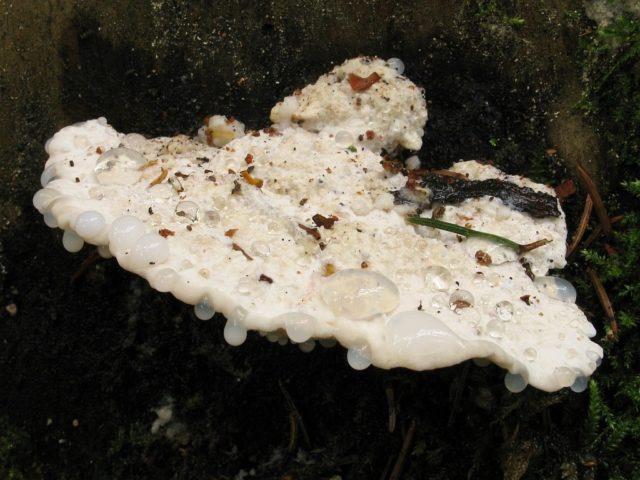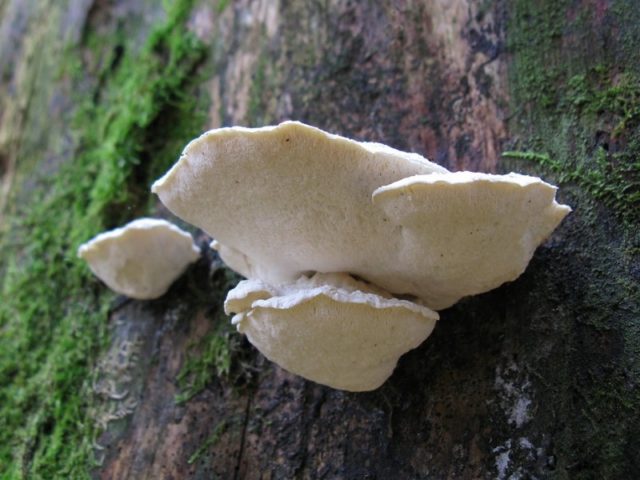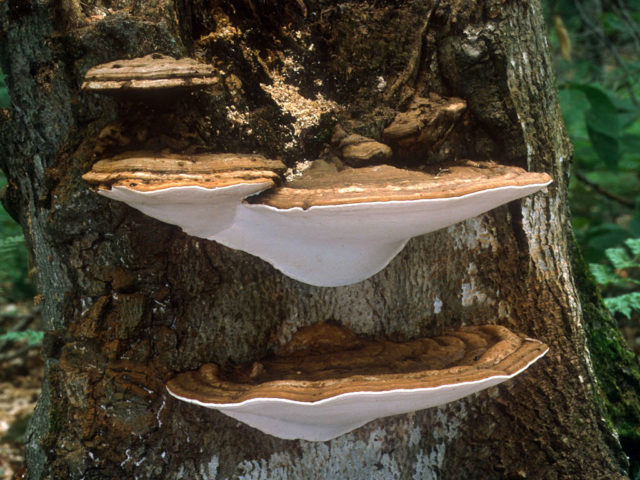Content
Mushrooms that grow on tree bark or stumps are rarely considered edible by mushroom pickers. However, some of them have quite decent taste, and are also characterized by healing properties. On the eve of the hot mushroom season, it is worth taking a closer look at this type of polypore mushrooms and figuring out what the post astringent is, what it looks like and whether it is edible.
Where do the posts and binders grow?
Tinder fungus grows throughout Russia, therefore it is found everywhere in coniferous and mixed forests. Coniferous trees - spruce, pine, fir, are a favorite growing place for postia astringent. It is very common on the rotten remains of conifers and stumps. Rarely, but still you can find old hats on hardwood - oak, beech. Fruit bodies, unpretentious to growing conditions, grow actively from mid-July to the end of October - early November, that is, before the onset of cold weather.
What posts and binders look like
Astringent is a widespread and unpretentious woody tinder fungus of white color, with a rounded or complex body shape. It belongs to the annual tinder fungus, it is distinguished by a white, milky color that attracts the attention of mushroom pickers, a medium-sized fruit body, which has a different shape: semicircular, triangular, shell-shaped, kidney-shaped. Individual specimens can grow to large sizes, but this is rather an exception. On average, the thickness of the caps is 3-5 cm, but this is directly influenced by the growing conditions. The knitting post grows singly or in groups, where individual mushrooms grow together and acquire an irregular, sometimes very original, shape.
Mushrooms have a very fleshy, juicy pulp - unpleasant and bitter in taste. The bare surface of the post has a gentle, soft pubescence in young individuals. Adult specimens become covered with wrinkles, tubercles, and become rough to the touch. Like all tinder fungi, the hymenophore in the post astringent is tubular, white with a slightly yellowish tinge.
Is it possible to eat post and astringent
Astringents are inedible woody mushrooms, the properties of which are still poorly understood. However, because of their bitter, extremely unpleasant taste, they are not eaten. In general, tree fungi are very rarely edible. As a rule, some of them can only be eaten at a young age. But postia astringent is considered an unfit for food poisonous mushroom, which is not used for cooking even at a young age.
How to distinguish between post and astringent
Distinctive features of an astringent post:
- small, clear or whitish drops of liquid are secreted by young mushrooms;
- fruiting bodies have sharp edges of caps, only in very rare cases are they slightly dull;
- from the closest relative - the bluish-gray postia - this variety is distinguished by a snow-white color;
- this representative is found on coniferous wood, rarely on oak and beech.
The knitting post bears a resemblance to tinder fungus and aurantioporus, which can be found not only on conifers, but also on deciduous trees. These mushrooms are also poisonous, although they are less rancid and viscous than postia. Their caps are more intense, light brown.
The video will allow you to understand well the toxic, most dangerous mushrooms for humans:
Poisoning symptoms
In case of poisoning with post it is important to provide the person with qualified medical care as soon as possible. Symptoms of mushroom poisoning are very diverse, and only a specialist can make the correct diagnosis. The following signs of poisoning may appear singly or in combination:
- severe nausea, vomiting;
- pain in the abdomen, cramps;
- headache, dizziness;
- diarrhea;
- general weakness;
- constant thirst.
Often, the above symptoms are accompanied by a malfunction of the cardiovascular and respiratory organs. This entails:
- difficulty breathing and shortness of breath;
- drop in blood pressure;
- increased heart rate or, conversely, its rare manifestation.
As a rule, with poisoning with astringent posture, profuse sweat or strong salivation occurs. In some cases, poison can penetrate the central nervous system, causing its disorders and manifesting itself in a complex of characteristic symptoms:
- delirium or hallucinations;
- agitation or lethargy;
- loss of consciousness.
First aid for poisoning
Before the arrival of a qualified specialist, it is important to provide the victim with first aid. What is important in such a situation to take:
- Rinse the stomach, forcing the patient to drink 1.5 liters of warm water in small sips. Add a little potassium permanganate to the water until a light pink hue is obtained. If there is no vomiting, then you need to cause it yourself after drinking water by pressing your finger on the root of the tongue. If traces of food are observed in the vomit, then the procedure is repeated.
- Give a laxative and activated charcoal, which, due to its absorbing action, will absorb toxins.
However, if a person suffers from low blood pressure or it drops rapidly, vomiting and diarrhea can provoke loss of consciousness, which will aggravate the situation. In this case, it is better for the victim to drink strong tea. The main conditions for first aid are hunger and rest. You can put a warm heating pad on your stomach and legs to prevent circulatory problems and relieve pain. In case of poisoning with astringent post, it is not recommended to independently prescribe medications and take alcoholic beverages.
Conclusion
Posttia astringent in gastronomic and medical terms is of no interest. It is a poisonous tree fungus that grows everywhere. It differs significantly from other fruiting bodies in appearance, therefore it is difficult to confuse postia with them, which practically eliminates the risk of poisoning.











